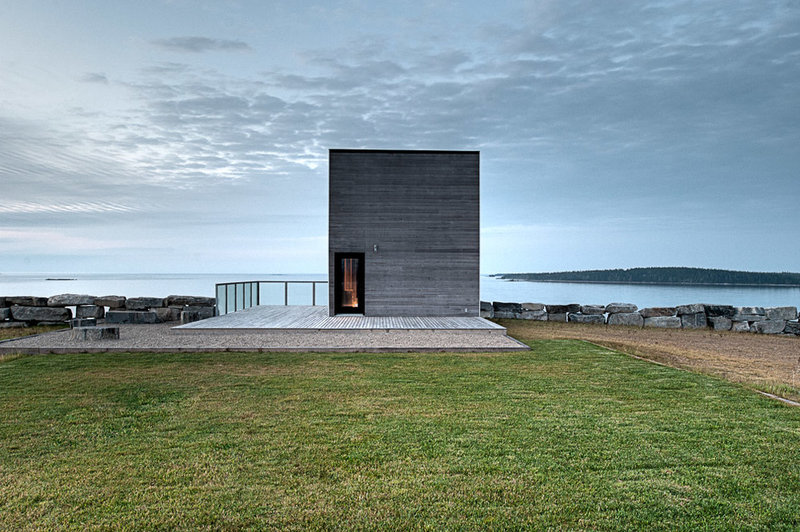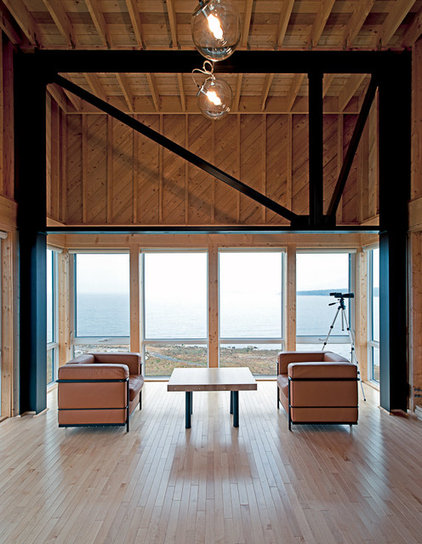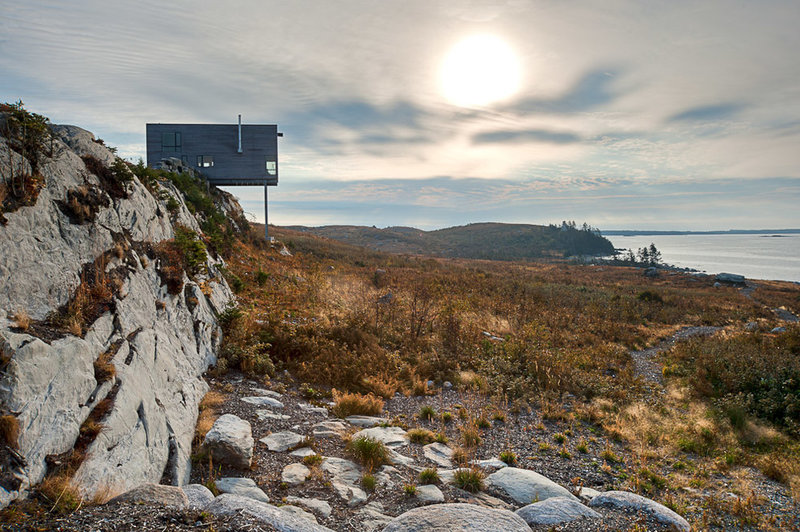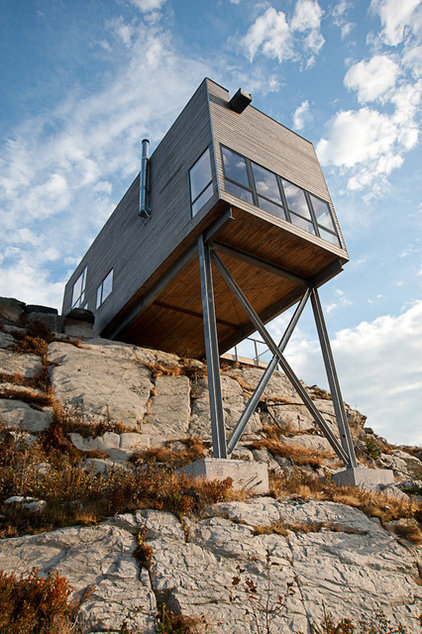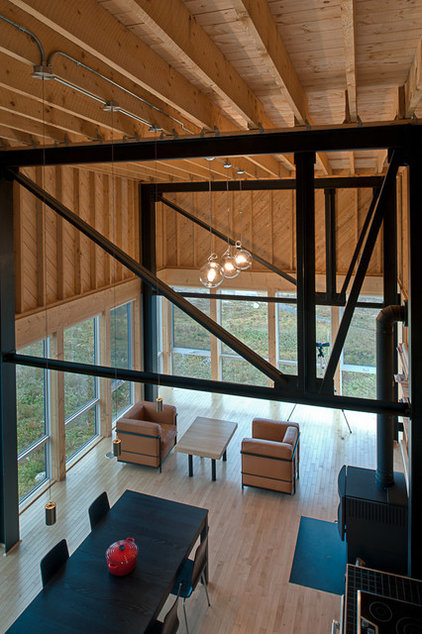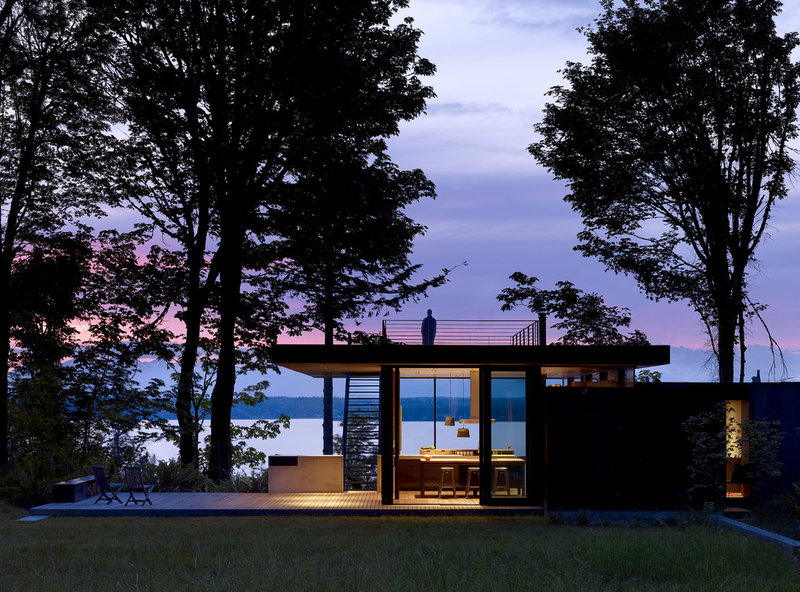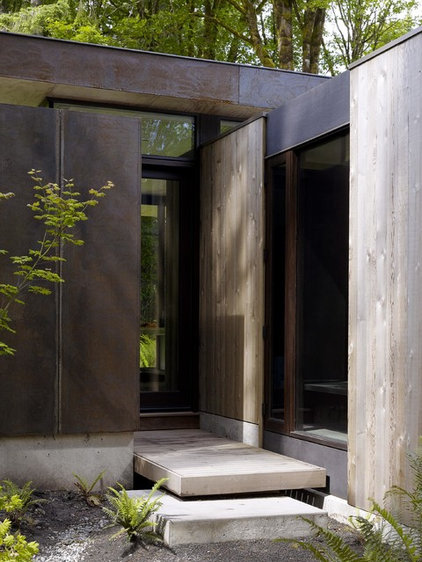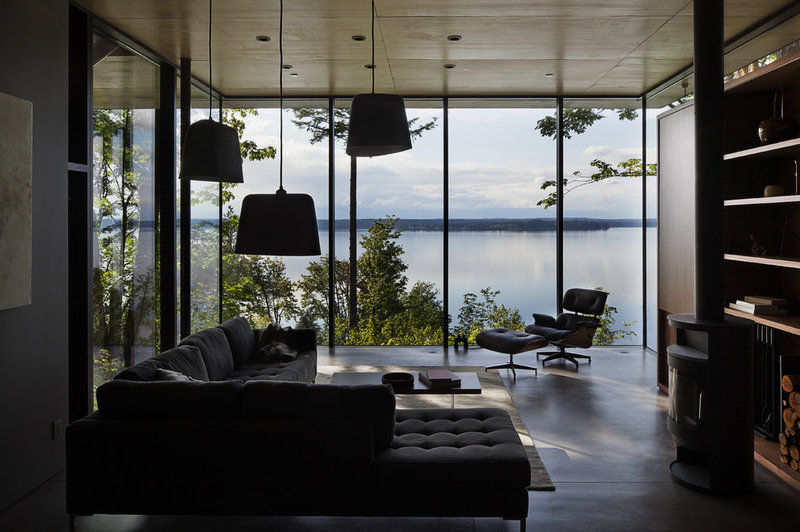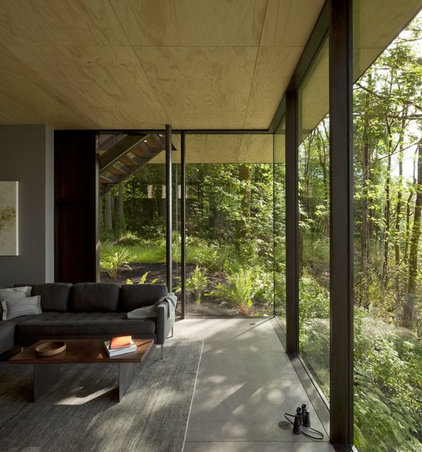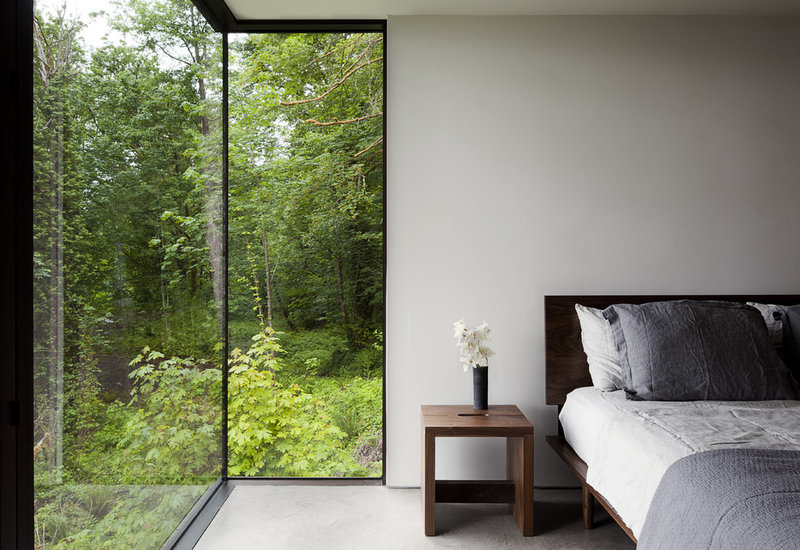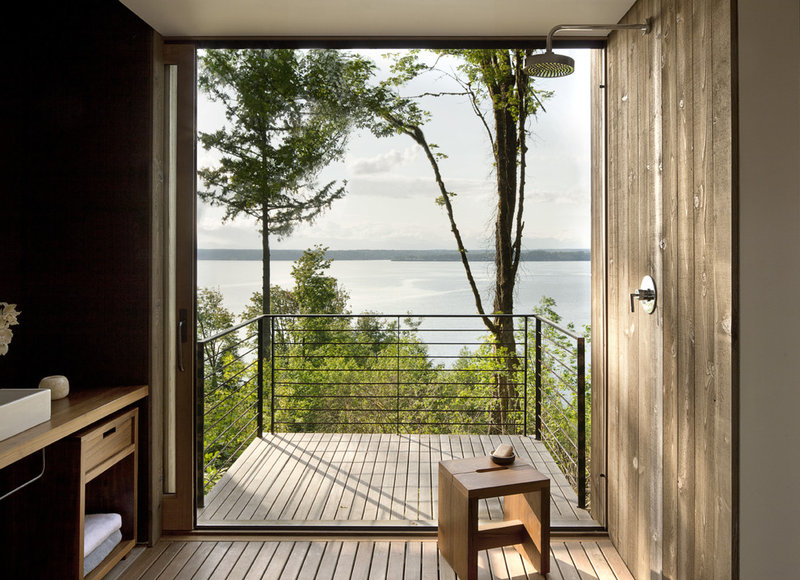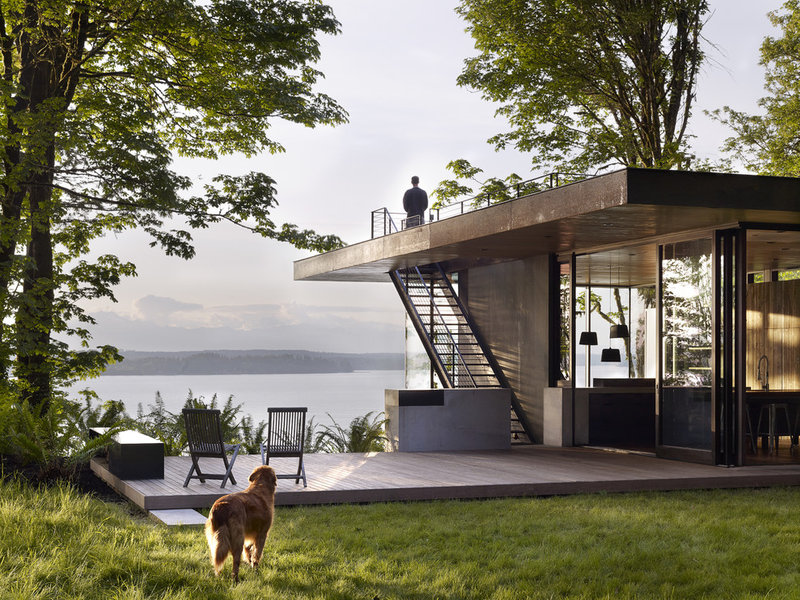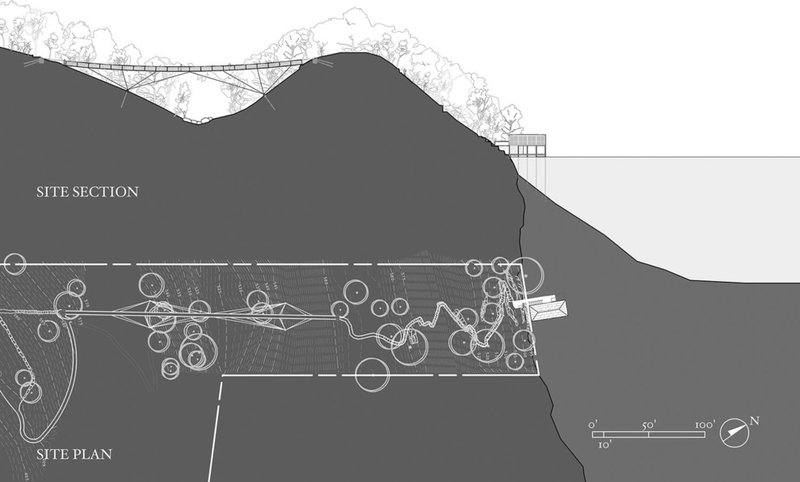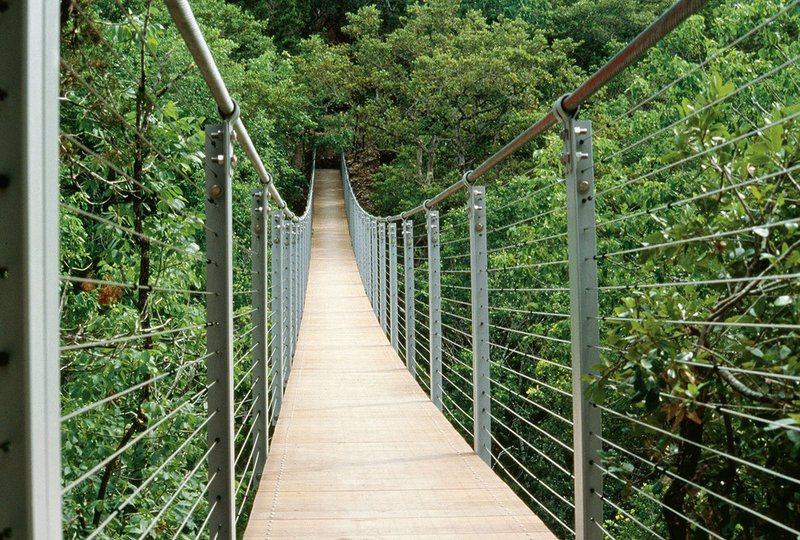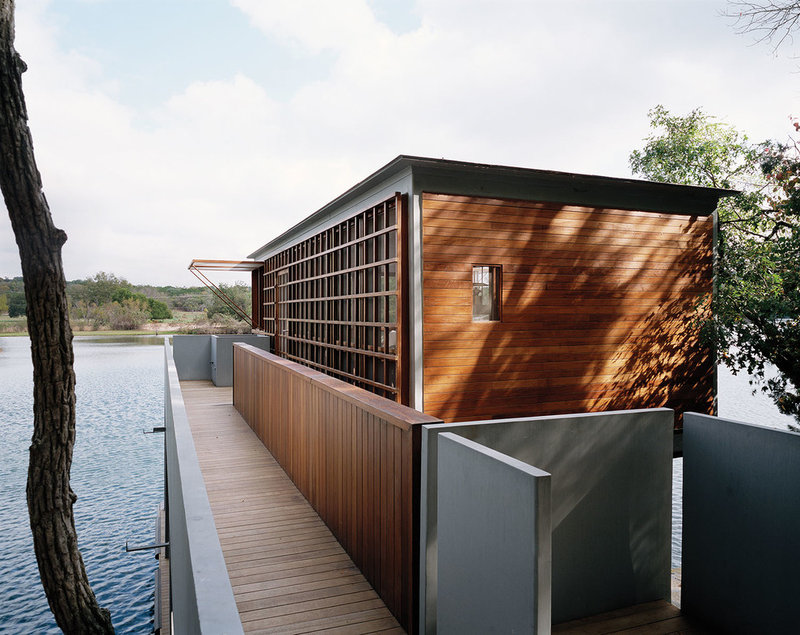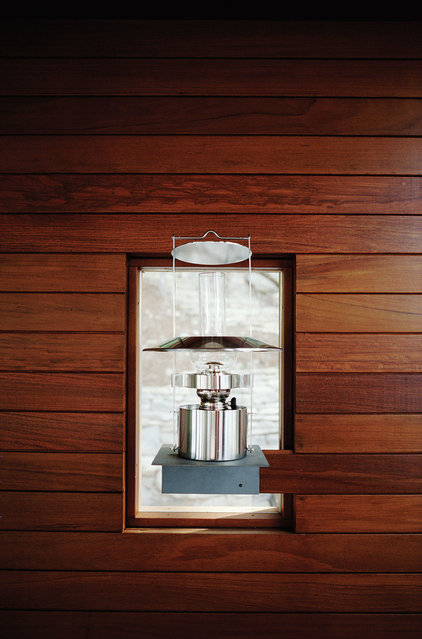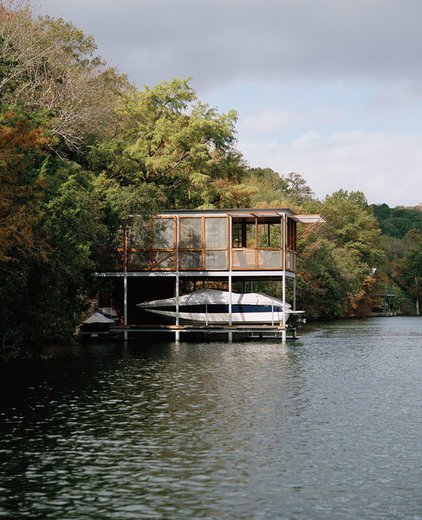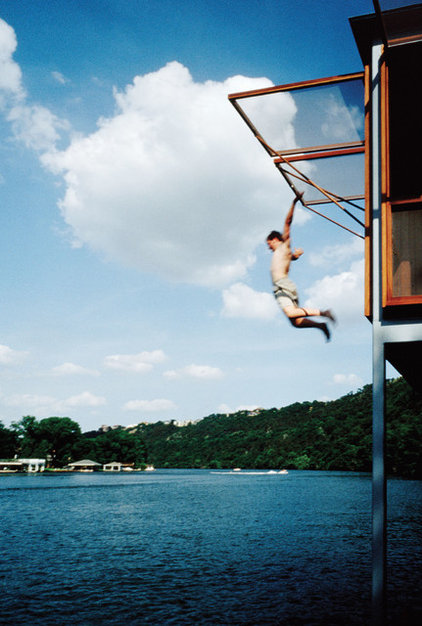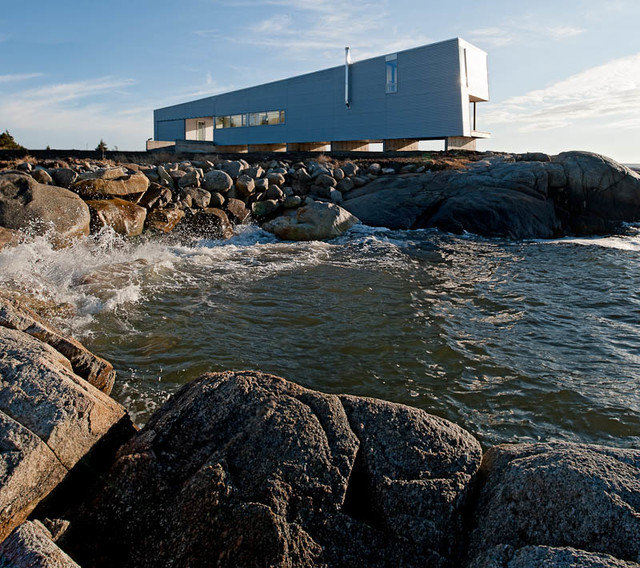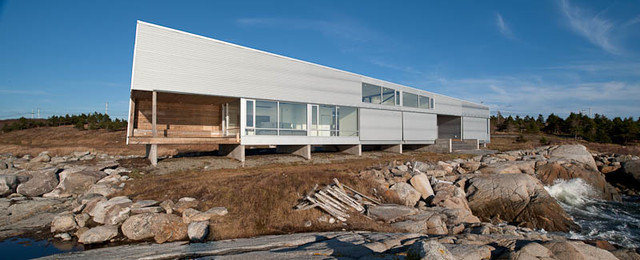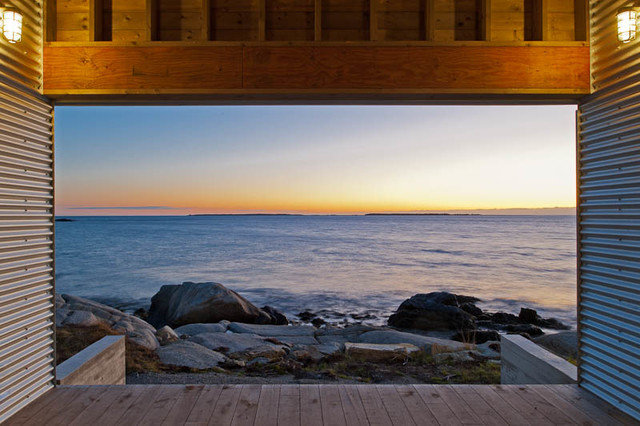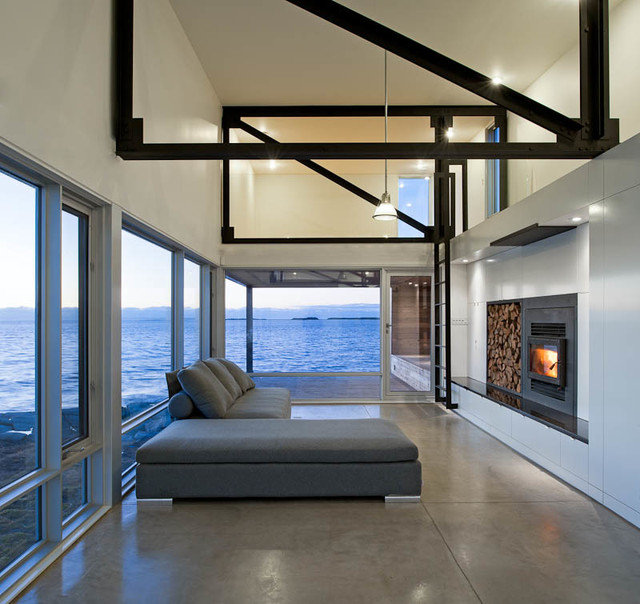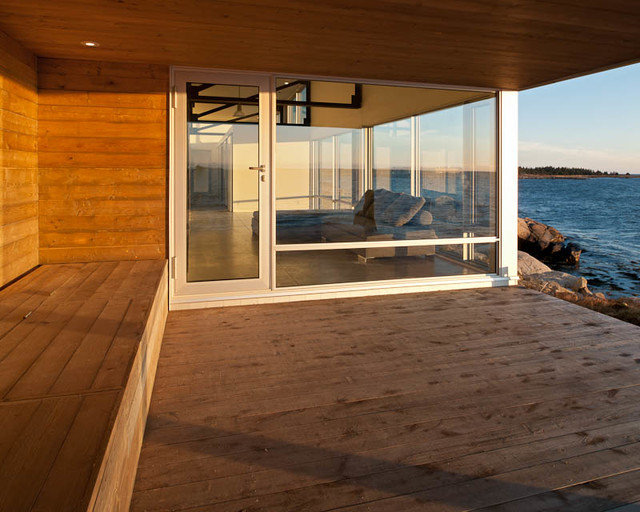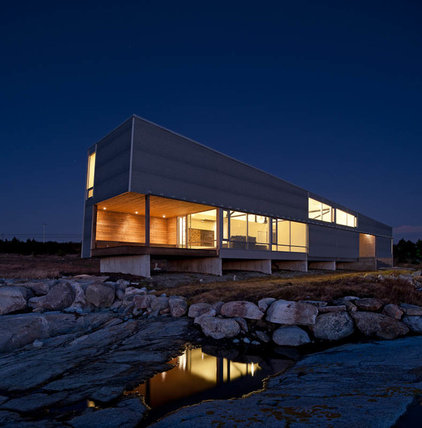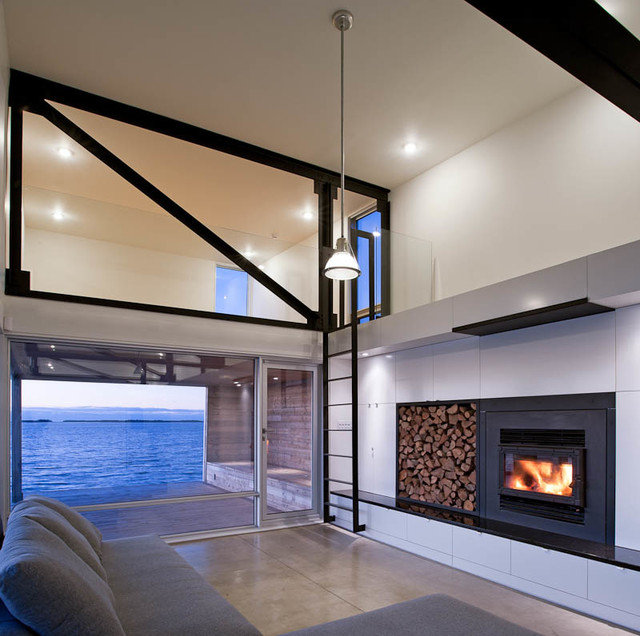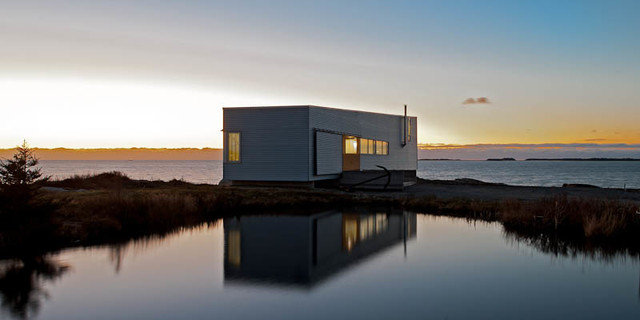All the Possibilities: 4 Homes at the Edge of the Earth
The following projects explore these boundaries in some thought-provoking and controversial ways. Some might argue they’re unsafe or take unnecessary risks. But the very nature of architecture is that it challenges us to see the world differently. The design process requires that architects filter many different ideas and constraints — safety laws, professional standards of construction, local building codes and environmental regulations. Architects must also satisfy their client’s needs, desires and budget, and of course, the synthesis must be aesthetically pleasing. Where these designs excel is in their ability to prioritize the inhabitants’ safety while still managing to highlight the drama and danger present in these exposed sites.
Here’s a look at how a home can challenge the natural environment and occupy the boundary between architectural convention and stunning natural beauty.
The approach to this seasonal cottage on the coast of Nova Scotia intentionally reveals little. The silvery gray of the cedar cladding marries with the granite landforms, gray sea and muted sky. The simple cube and viewing deck are deferential to the view and the site, without ornament or remarkable form. They feel right at home among the area’s austere weathered cedar fishing shacks.
It’s only upon entering that one has a sense of just how far above the land the home resides on the ocean side. One half of the house is positioned over a precipitous drop-off, giving rise to its name, The Cliff House. The entry-level interior and main living space open to a sweeping view of the horizon, the sloping topography and the sea.
Openings in the walls are crafted to specifically shape the interior experience of the boundary as well. The living room windows capture a full 180-degree panoramic vista, while the upper sleeping loft offers longer, axial views across the cliff face paralleling the coast.
The structural requirements are met with the same directness that the entire composition was birthed with. The steel framing feels necessary, but also impermanent, like a tripod or a fire tower. Its beauty lies in its utility. One has the sense that it could be folded up, stowed and moved at any point, but that this place was selected for its unique position in the landscape.
Looking toward the living room from the loft, one senses only the ground far below — not the sea, as one might expect. This makes for a richly varied interior experience in a trim 960 total square feet.
Gratuitous, perhaps, but the design — which marries safety, structural expression and experience — is admirable. The sum total is a building that defers to its boundary condition and celebrates it by contrasting its features. Perching the home on the edge of the cliff has created a depth of experience and a heightened appreciation for the elements that make up the building’s environment. As this was achieved within the boundaries of myriad code constraints, it’s all the more admirable.
This weekend retreat sits at the intersection of a meadow and the forest edge, with an expansive view of Washington’s Puget Sound. The architecture capitalizes on its precise boundary position in the landscape to reveal the interrelationships as one moves through the home.
The arrival is informal, and it establishes the sense of discovery that’s present throughout the project. The variety of experiences to be had in a small space is really exciting. The more compressed, darker entry area seen here reminds one of the forest.
By playing with the amount of solid wall and glazed walls, the architects have developed a tenuous sense of shelter. One feels protected yet still exposed in these spaces.
The marriage of safety and aesthetics is intentional and designed. The railings are visually minimal.
This is a project that is as much about the experience as it is about the architecture. At close to a mile, the approach is a journey that traverses many boundaries.
This house is perched on unforgiving and exposed terrain on the rocky coast of Nova Scotia, on a granite outcropping where the owners had gathered to watch the sunset before the home was conceived.
Resiliency is a key concept in this marine environment, where it’s easier to invite wave action beneath the structure than it is to design a wall to resist it. Visually, the fins remind me of boat slips and the house of a ship’s hull in dry dock.
Here we begin to get a sense of the material palette inspired by the site’s own weathered blue-grays. The humble corrugated metal siding, chosen for its durability, conjures images of the planking used for boat hulls. The cedar, a common local building material, is naturally rot resistant. When left exposed to the sun and salt air, it quickly turns silver. The concrete anchors the construction and mimics the nearby granite.
The interior material palette abstracts the boundary between land and sea as well; the polished concrete feels both rooted and water-like. The neutral wall colors assume the colors of the surrounding environment: the changing hue of the setting sun or the dark gray of an approaching storm, for instance.
The architects have cleverly outfitted the home with large sliding panels to cover the glazed walls when storms approach. The resilient design allows the building to adapt to changing weather conditions.
A daring reminder. It’s a tenuous relationship, though. I think that’s why I appreciate it so much — for its boldness. Would you site a home here? Maybe, maybe not.
Do I question whether it’s safe? Absolutely not. The very fact that it was built is proof that it met the complex challenges the architects faced. Satisfying a client’s needs and wants, aesthetic concerns and budget, along with professional design standards, zoning and environmental laws, and safety regulations — it isn’t easy.
To me this home is a clear example of the possibilities of architecture designed to inhabit the boundary condition and a reminder of why I became an architect.
